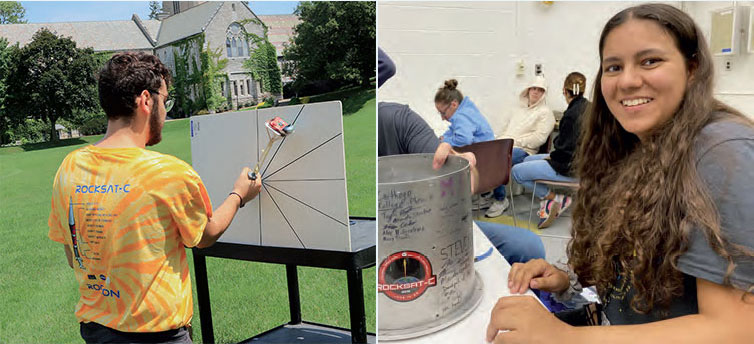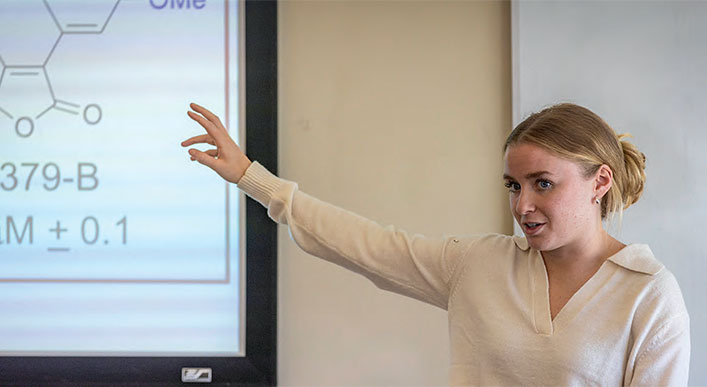The Pulteney StreetSurvey
UP CLOSE AND PERSONAL: NEW PERSPECTIVES ON STEM
Crossover solutions.

“The interface between social sciences and STEM is oftentimes overlooked, but I think that to understand the importance of our work, it’s really important to be socially aware,” says Dimosthenis Chrysochoou ’22. Using off-the-shelf drones, the physics major developed a summer research project to detect harmful algae blooms in the Finger Lakes. Julia Bellamy ’22 took his research one step further with her Honors project, which investigated and developed algorithms to quantify a concentration of algae in the photographs initiated through her work in ENV 281: Remote Sensing. Because the blooms impact health and local economies, Chrysochoou and Bellamy wanted to create an affordable method for the community and policymakers to gather data. Their work is part of an ongoing aerial imaging project to track and predict blooms, led by Associate Professor of Physics Ileana Dumitriu, Professor of Environmental Studies John Halfman and Director of the Finger Lakes Institute Lisa Cleckner. Chrysochoou and Bellamy were also part of recent HWS teams to participate in RockSat-C, the only NASA program that gives undergraduates access to space. Pictured here, Chrysochoou makes calculations for the rocket’s launch; Bellamy tweaks the sensor package before the launch. Chyrsochoou is now studying at Columbia University’s School of Engineering and Applied Science, and Bellamy is at Dartmouth College, both through the joint-degree engineering programs with HWS.
Lab results.

In Professor of Biology Patricia Mowery’s lab, Maegan Manning ’22 tested molecule inhibitors with the potential to treat cancer. The inhibitors are synthesized in Professor of Chemistry Erin Pelkey’s lab and could help reveal the “structure of compounds that are most potent against lymphoma cells,” explains Manning, who recently began a two-year biomedical research position at the National Institutes of Health Clinical Center. As a Postbaccalaureate Intramural Research Training Award recipient, she works side-by-side with some of the world’s leading scientists. She is based in a translational research lab, focusing on patients infected with HIV and the immunological differences in the way distinct patient groups suppress the virus. She explains that “translational research bridges the gap” between basic research and clinical research. “The hope is that our data can then be used in one form or another to improve the health outcomes of our patients.”
